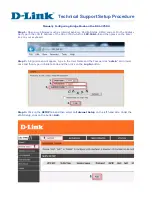
C H A P T E R
1-1
Cisco Aironet 1550 Series Outdoor Mesh Access Point Hardware Installation Guide
OL-24247-01
1
Overview
The Cisco Aironet 1550 Series Outdoor Mesh Access Point (hereafter called the
access point
or
AP
) is
a modularized wireless outdoor access point designed for use in a mesh network. The access point also
supports wireless client access, point-to-point bridging, point-to-multipoint bridging, and
point-to-multipoint mesh wireless connectivity.
About the 1552 Access Point
The 1552 access point supports two radios (2.4-GHz and 5-GHz) and provides client access without the
need for a license. The 5-GHz radios are primarily used for backhaul operations to reach a wired network
and the 2.4-GHz radio is used for wireless clients. Depending on the radio, the access point can support
1 to 300 Mb/s data rates (for specific data rates, refer to
Appendix D, “Access Point Specifications”
).
The 1552 access point supports the modularity of the 1520 series and allows flexibility in radio
configuration. In addition to full interoperability with 802.11n clients, the 1552 access point
interoperates with legacy clients and offers enhanced backhaul performance. The 1552 access point can
also be configured with an integrated DOCSIS 3.0/Euro DOCSIS 3.0 cable modem.
The access point is a standalone unit that can be cable strand or tower mounted. The access point can
also operate as a relay node for other access points not directly connected to a wired network. Intelligent
wireless routing is provided by the patented Adaptive Wireless Path Protocol (AWPP). This enables each
access point to identify its neighbors and intelligently choose the optimal path to the wired network by
calculating the cost of each path in terms of signal strength and the number of hops required to get to a
controller.
The access point is configured, monitored, and operated through a Cisco wireless LAN controller
(hereafter called a
controller
) as described in the
Cisco Wireless LAN Controller Configuration Guide.
The
Cisco Wireless Mesh Access Points, Design and Deployment Guide, Release 7.3
describes how to
plan and initially configure the Cisco mesh network, which supports wireless point-to-point,
point-to-multipoint, and mesh deployments. The controllers use a browser-based management system, a
command-line interface (CLI), or the Cisco Prime Infrastructure (PI) network management system to
manage the controller and the associated access points. The access point supports hardware-based
advanced encryption standard (AES) encryption between wireless nodes to provide end-to-end security.
This chapter provides information on the following topics:
•
Hardware Models, page 1-2
•
Hardware Features, page 1-5
•
Network Deployment Examples, page 1-25
















































